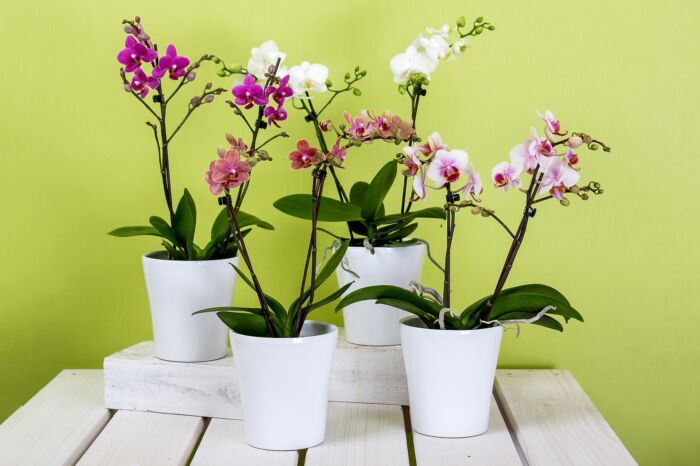
With the arrival of spring, the wedding season opens, which generally starts in April and ends in October, and many will already be thinking about how to celebrate their union in the most original way possible, so that this day is unforgettable for themselves and their guests.
Generally, wedding planning is related in many cultures to waste and excess of various kinds. In recent years, however, there is, fortunately, a growing awareness of environmental sustainability even in reference to the organization of various events, including weddings.
When you start researching how to plan a green wedding, the advice on the web is varied, some quite consistent with the concept of circular economy, others much more prone to greenwashing in disguise. A basic concept of the circular economy is the reuse of materials before sending them for recycling; greenwashing, on the other hand, is based on the idea of buying new items but with an alleged environmental benefit often without satisfactorily specifying the origin of the items purchased and without using environmentally sustainable packaging.
Many of the insights mentioned below, are accessible simply by entering keywords in a common search engine. However, in this article I share my personal experience, recounting how I organized my eco-conscious wedding as a staunch Low/Zero Waste volunteer, with the hope that it may pique the curiosity and desire to try to do as well or, why not, better in terms of environmental sustainability for the most important day of one’s life.
1. Number (and choice) of guests
It is desirable to keep the number of guests under control, so planning a low-key wedding will certainly be easier. Also keep in mind that in our case for various reasons the invitations were extended to people who were not considered in the first list. My advice is: be firm in your choices. In any case, we managed to keep it to 60 guests, thus being able to personalize the ceremony.
2. Participations
Given that our guests live in four different European countries, printing and sending invitations around Europe would have had a large CO2 footprint. Ergo, the invitations were sent via email, although aware of the environmental impact of email (https://carbonliteracy.com/the-carbon-cost-of-an-email).
3. Location
We chose my godfather’s wonderful country villa nestled in a bucolic landscape with zero-kilometer catering, no disposable dishes and glasses, and using returnable-empty drinks.
We, in addition, hired a bus to allow about 30 guests from the same place to reach the refreshment location. A location reachable by train would have been optimal, but really in the area we chose, this would have been impossible. Many guests opted to take the plane because they came from four different countries, only one guest chose to come by train traveling a full 18 hours. Therefore, alas, red card for CO2 impact in terms of transportation!

4. Gifts
For gifts, the IBAN was communicated. What seems like a cheapskate choice actually avoided receiving pots, pans, and household items of dubious taste and likely little use that would have ended up in cupboards gathering dust. Personally, I try to buy second-hand dishes and glasses as much as possible so that I don’t have to cry in case the “good set” gets broken or damaged.
5. Bridal gown
When choosing, think about the vacuum-packed dresses that languish in closets forever because often the wedding dress, shoes or hair accessories are practically disposable. I opted for a silk outfit consisting of a top paired with a skirt with the idea of reusing each of these items separately in the future and/or perhaps selling them after the wedding. My dress is now available on Stillwhite: https://www.stillwhite.com after being washed and stain-free. I am waiting for it to find another owner in hopes that she will be as happy to wear it as I am!
Another option for selling the wedding dress is this: https://www.brides.com/sell-wedding-dress-4801959.
Also, aware of the ecological impact of the textile industry (https://www.europarl.europa.eu/news/it/headlines/society/20201208STO93327/l-impatto-della-produzione-e-dei-rifiuti-tessili-sull-ambiente-infografica) and wanting to buy a “local” (British) dress, I chose a sample model already in the atelier that I had adapted to my silhouette: the chosen style of dress is available here: https://www.charliebrear.com/styling-collection-additions-2023/isere.
6. Shoes & accessories for the bride’s hairstyle
Vinted is a great option for being able to buy shoes and hairstyle accessory: with only 100 euros I gave a second life to items that were lying in closets. In particular, wedding shoes, often made of satin, are practically unrecoverable despite the waterproofing spray. I’ll add here a small note about the lingerie for the photo shoot that some people buy: in my case the suit was bought on sale in a lingerie store (hard to find second-hand in acceptable condition in my size) and the babydoll on Vinted. I managed to sell them in record time after the wedding, again on the same platform.

7. Dress code of the guests & groom
As my husband and I are fans of swing music and dancing, it seemed natural to have a 1920s-themed wedding and we encouraged our guests to opt for second-hand carnival dresses and embrace a light-hearted party spirit rather than a formal outfit. Right from the start, we motivated our guests to focus on accessories, avoiding buying new items and trying to stay in theme without overdoing it. The groom took the same approach and “reused” a suit he had previously purchased for another occasion.
8. Common & hall decorations
The hall was not decorated with paper streamers or balloons, and I do not recommend paper or plastic confetti to avoid polluting the lawn. The floral decoration of the tables was another battle that I (alas) partially lost because seasonal flowers were used for simplicity, but we could have opted for small potted plants. For communal decorations, potted plants (in my case orchids, all still alive about a year later) can be a good solution. For the bridal bouquet, the idea of walking around with a potted plant in hand did not excite me despite my best intentions. Ergo, the compromise was to have a bouquet of orchids for me and wildflowers for my bridesmaids. My intention to dry the flowers in the bouquet and display it indoors was absolutely destroyed by the result; my orchid bouquet, despite my resilience, ended up miserably in the dustbin. Do not use orchids if the intention is to dry out the bouquet.

9. Photo booth
The chosen option was a do-it-yourself solution with iPads and accessories strictly purchased on online platforms and second-hand stores or found in one’s own closets. The batch of accessories was put back for sale right after the wedding, the only exceptions among the jealously preserved items being a vintage sailor hat and a blond wig found in a charity shop (https://en.wikipedia.org/wiki/Charity_shop). I really want to point out these kinds of stores, which are sometimes treasure chests of wonders ready to find a second life and which, run, by volunteers allow the proceeds to be offered to charity. In Italy, thrift stores are becoming more and more popular, and it is comforting to know that the second-hand culture is catching on here as well. Don’t underestimate them when searching for wedding decorations!
10. Favors & Confetti
Some of you upon hearing the word “wedding favors” will have images in your head of silver saucers and spoons of all types and shapes crammed inside your grandmothers’ china cabinets gathering dust. Today, the trend is to give more useful items to guests, but at least half the time wedding favors and confetti are wrapped in plastic and disposable packaging of various kinds. Of course, there has also been massive green-washing that involves encouraging the bride and groom to give seemingly eco-friendly things (often wrapped in plastic!), but which really have no practical use. I personally opted for a homemade gift: a macramé vase holder in a tulle bag, handmade by my mother. Of course, not everyone has the time to wrap super personalized gifts, I think honestly not having that option I would have probably donated a pillar to charity.
The sugared almonds were bought in bulk in containers of various shapes and sizes. Thanks to Article N7 of the 2019 Official Gazette (https://www.gazzettaufficiale.it/atto/serie_generale/caricaArticolo?art.progressivo=0&art.idArticolo=7&art.versione=1&art.codiceRedazionale=19A07885&art.dataPubblicazioneGazzetta=2019-12-13&art.idGruppo=0&art.idSottoArticolo1=10&art.idSottoArticolo=1&art.flagTipoArticolo=0) it is legal to use your own containers to buy food in bulk. I went to a sugared almond store and was able to go home with multicolored sugared almonds in many different containers, and in one evening the favors were ready. The number of guests was key to the success of this operation, impossible to personalize the attendees in case the numbers were pharaonic.

I hope that publicly sharing my experience will be helpful in helping many to reflect on their own green wedding planning, aware that on some aspects we could not do better under the circumstances, given also the limited time available, and therefore our organization, in hindsight, would definitely be perfectible.
I conclude with the motto of the Zero Waste association that I have really made my own: “It does not matter that everyone performs Zero Waste actions perfectly, but that some do it imperfectly!“






































